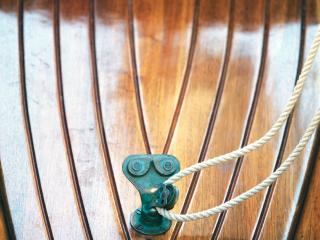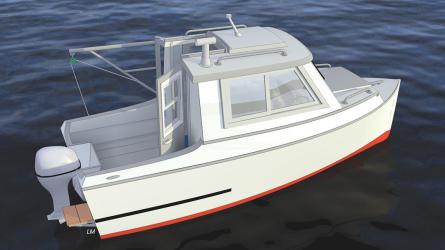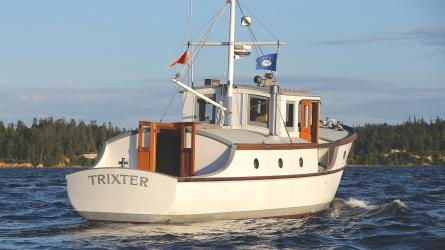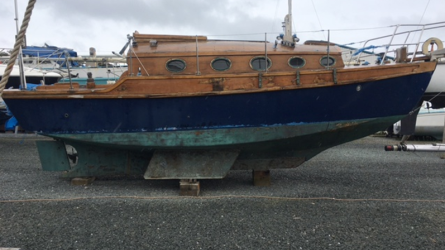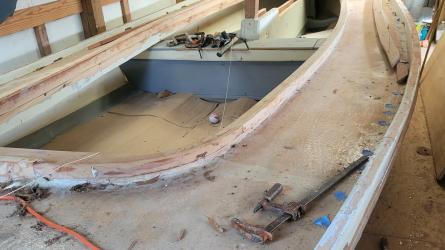May / June 2019
The State of the Art of Recreational Rowing

As the sport of recreational rowing grows in popularity, designers and builders are responding with boats geared toward amateur builders and a range of rowing styles. Above is the Oxford shell, a multichined stitch-and-glue plywood scull from Chesapeake Light Craft.
The sport of recreational rowing is growing, and boat designers and builders are responding by offering a variety of light, high-performance craft that match the needs of both novices and experts. While these boats are all so-called “sculls” (see sidebar, page 39), they are from a diverse family of designs—examples of which are presented on the following pages. The examples are all wooden, and all suited to construction by amateur builders.
Although wood lost its grip in the world of competitive rowing a generation ago, it is an ideal choice for amateur construction. At any crew regatta today, the competitive boats are built of synthetic materials: epoxy, fiberglass, carbon fiber, and Kevlar. The elegant, varnished wooden shells of yore have long since gone to museums, or been scrapped for firewood. In the rowing world’s slow lane, though, wood still delivers. The engineering properties of the most commonly used species—cedar, spruce, and fir—are a unique combination. These woods are easy to shape and finish, they have high strength-to-weight ratios, they bend readily, and they are easily glued. When covered in fiberglass and epoxy, wooden hulls achieve great torsional strength and abrasion resistance. Wood is also economical and environmentally friendly. There is no better material for recreational sculls built singly or in small numbers.
Design Parameters
The elegant lines and good looks of wooden sculls may deter some potential builders, because the boats seem to call for exceptional woodworking talents. Also, many sculls look frail, suggesting that they are delicate and short-lived. Looks are deceiving, though. Properly built wooden sculls are surprisingly tough and durable. Given reasonable care, they will survive for generations. To be sure, some of them are indeed examples of genuine woodworking art. They show flawless joinerwork and are embellished with intricate inlays and contrasting woods. However, the bar for a homebuilder need not be set that high. A well-performing scull is well within the capabilities of a woodworker with moderate skills.
To read the rest of this article:
Click the button below to log into your Digital Issue Access account.
No digital access? Subscribe or upgrade to a WoodenBoat Digital Subscription and finish reading this article as well as every article we have published for the past 50+ years.
ACCESS TO EXPERIENCE
2-for-1 Print & Digital Subscription Offer
For this holiday season, WoodenBoat is offering our best buy one, get one deal ever. Subscribe with a print & digital subscription for $42.95, and we’ll give you a FREE GIFT SUBSCRIPTION to share with someone special.
1 YEAR SUBSCRIPTION (6 ISSUES)
PLUS ACCESS TO MORE THAN 300 DIGITAL BACK ISSUES
PRINT+DIGITAL $42.95
Subscribe
To read articles from previous issues, you can purchase the issue at The WoodenBoat Store link below.
 Purchase this issue from
Purchase this issue from



